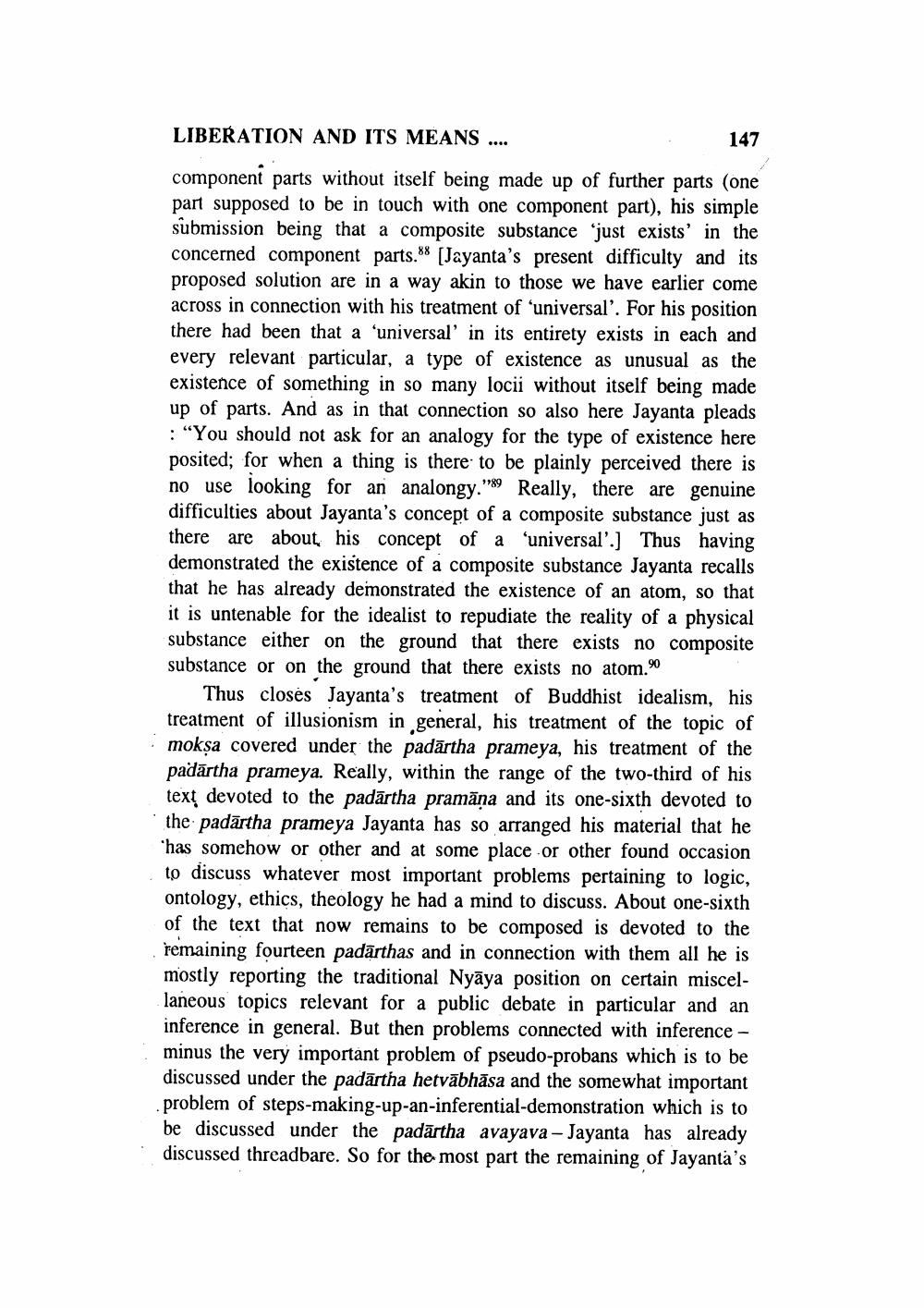________________
LIBERATION AND ITS MEANS
147
component parts without itself being made up of further parts (one part supposed to be in touch with one component part), his simple submission being that a composite substance 'just exists' in the concerned component parts.88 [Jayanta's present difficulty and its proposed solution are in a way akin to those we have earlier come across in connection with his treatment of 'universal'. For his position there had been that a 'universal' in its entirety exists in each and every relevant particular, a type of existence as unusual as the existence of something in so many locii without itself being made up of parts. And as in that connection so also here Jayanta pleads : "You should not ask for an analogy for the type of existence here posited; for when a thing is there to be plainly perceived there is no use looking for an analongy." Really, there are genuine difficulties about Jayanta's concept of a composite substance just as there are about, his concept of a 'universal'.] Thus having demonstrated the existence of a composite substance Jayanta recalls that he has already demonstrated the existence of an atom, so that it is untenable for the idealist to repudiate the reality of a physical substance either on the ground that there exists no composite substance or on the ground that there exists no atom.
Thus closes Jayanta's treatment of Buddhist idealism, his treatment of illusionism in general, his treatment of the topic of mokşa covered under the padartha prameya, his treatment of the padartha prameya. Really, within the range of the two-third of his text devoted to the padartha pramäņa and its one-sixth devoted to the padartha prameya Jayanta has so arranged his material that he has somehow or other and at some place or other found occasion to discuss whatever most important problems pertaining to logic, ontology, ethics, theology he had a mind to discuss. About one-sixth of the text that now remains to be composed is devoted to the remaining fourteen padarthas and in connection with them all he is mostly reporting the traditional Nyaya position on certain miscellaneous topics relevant for a public debate in particular and an inference in general. But then problems connected with inference - minus the very important problem of pseudo-probans which is to be discussed under the padartha hetväbhasa and the somewhat important problem of steps-making-up-an-inferential-demonstration which is to be discussed under the padartha avayava-Jayanta has already discussed threadbare. So for the most part the remaining of Jayanta's




